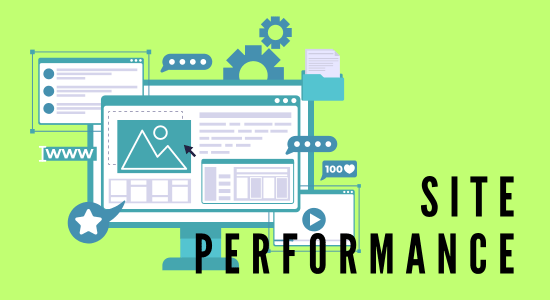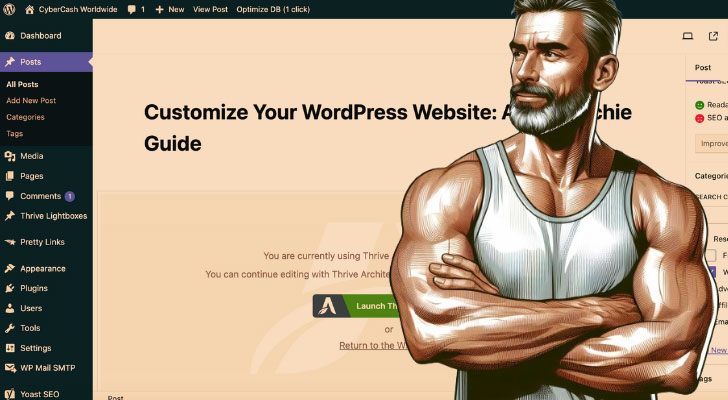Are you brand new to WordPress, trying to create your first website and feeling lost? Everyone says it’s one of the easiest website builders, and the templates all look so fabulous. But once you download it, the homepage looks so bland which makes you feel there’s a great big customizing job to do.
I know how you feel because I felt the same when I first started, but it didn’t take me a few hours to work that all out. WordPress really is made for non-techies, yet it’s so versatile. After all, that’s why it’s the most popular website builder in the world. So get ready to learn the basic steps and unleash your creativity to make your first website look decent.
Did You Know?
- Overwhelm with Options: About 57% of people feel overwhelmed by the number of themes and plugins available for WordPress.
- Technical Skills: Approximately 63% of non-technical users struggle with understanding the technical aspects of website building, like coding.
- SEO Confusion: Around 49% find optimizing their site for search engines challenging without guidance.
- Design Issues: Nearly 55% of users have difficulty achieving their desired website appearance due to design limitations or lack of design skills.
- Mobile Optimization: About 62% of website creators face challenges making their site mobile-friendly, an essential factor for modern websites.
Why Use WordPress?
They say WordPress is a content management system (CMS), but it’s just technical jargon. WordPress is used by millions of people to build websites, for no other purposes. Here are the reasons for being the most popular website builder in the world;
- Easy to use: Even if you don’t think easy right now, WordPress has a friendlier interface compared to other website builders.
- Versatile: WordPress offers thousands of themes and plugins that allow you to customize your site. I have used a lot of other “all done for you” website builders out there, but I always found out certain things I couldn’t do.
- SEO-friendly: WordPress is designed with SEO in mind and provides features such as customizable permalinks, XML sitemaps, and easy integration with SEO plugins. Other website builders usually come with an SEO feature too, but not as flexible as WordPress.
- Large community: WordPress has a large community of users and developers who contribute to its development, provide support, and create new plugins and themes.
- Cost-effective: WordPress is open-source software, which means it is free to use and can be hosted on a range of affordable web hosting platforms.
- Scalable: WordPress can be used for anything from small personal blogs to large corporate websites, and it can scale up or down as needed.
CyberCash Wonderland
"Oh Brandon, darling...I cannot take this anymore! Third-party integration, plugins, sitemaps... I just don't understand the jargon!"
"Neither do I, honey."
"So what do I do? Please help me."
"Third-party integration lets you connect your site to other services such as payment gateways. Plugins add features such as..."
"You're just reading ChatGPT, aren't you?"
"Yes."
"You're really letting yourself down and the team down. You're fired."
Why Should You Customize Your WordPress Website?
Why? In short, the default settings of a WordPress theme are very basic when you just download it. You will have to customize it to your liking, and that’s the beauty of it. There are a number of benefits such as;
Branding:
To establish a unique brand identity that reflects your company's personality, values, and vision, WordPress can let you customize it in any way you want.
Improved user experience:
Your website's design and functionality should be optimized to provide a positive user experience. This includes making sure your website is easy to navigate, loads quickly, and is accessible on all devices.
WordPress allows you to do all of this, plus, if you use your site as an online store, it also allows you to simplify the checkout process.
Differentiation:
Thousands of design options mean that you can stand out from the competition by offering unique features or elements that are not commonly found on other websites in your industry.
Customizing your website provides an opportunity to refine your content strategy. So you can consider what type of content will be most effective in achieving your goals and how it can be presented in a way that is engaging and easy to consume.
Enhanced functionality:
A range of plugins and themes to add new features and functionality to your website, such as social media integration, e-commerce capabilities, or advanced analytics.
SEO:
It can also help improve its search engine rankings by optimizing key elements. It means that you can optimize key elements such as page titles, meta descriptions, and image alt tags to make your website more visible to search engines.
Better engagement:
Engage with your audience in a more meaningful way, such as by adding interactive elements, including multimedia content, or creating personalized landing pages for specific campaigns.
Did You Know?
- Security Concerns: 47% are worried about security threats, like hacking or malware, due to a lack of knowledge in securing websites.
- Content Creation: Crafting engaging content is a struggle for 58% of users, crucial for attracting and retaining visitors.
- Navigation and Usability: Ensuring a site is easy to navigate and user-friendly is a significant hurdle for 53% of builders.
- Plugin Management: About 60% find selecting, installing, and managing plugins confusing or overwhelming.
- Update Management: Keeping WordPress, themes, and plugins updated without breaking the site is a concern for 49% of users.
How to Customize Your WordPress Site
So you open WordPress for the first time and what should you do? Here are the steps you can follow.
Choose a theme:
WordPress offers a wide range of themes that can be used to customize the design of your website. You can browse the WordPress theme directory.
You can change the theme as many times as you wish. So don't spend too much time trying to find the "best of the best" in the beginning. Because you might change your mind as you customize later on.
When you're used to WordPress and start making money with it, you can consider purchasing a premium theme from a third-party website.
CyberCash Wonderland
"Two thousand bucks?! Are you serious?! In this economy? I have my WordPress, I can slap some AI-generated text myself, it's not like it's brain surgery! SEO? Forget about it, who needs that anymore? It's all about TikTok Ads these days anyway. Look, what you're trying to sell might have worked 3 years ago but not anymore. Get out!"
Customize the theme:
Once you have chosen a theme, you can customize its settings to change the look and feel of your website. This can be done through the WordPress Customizer, which allows you to adjust elements such as colors, fonts, background images, and more.
Install plugins:
WordPress plugins can add new features and functionality to your website. You can browse the WordPress plugin directory or purchase a premium plugin from a third-party website. Popular plugins include;
- Yoast SEO for search engine optimization
- WPForms for creating contact forms
- All-In-One Security (AIOS) for website security and optimization, etc.
Create custom pages:
You can simply start writing your blog posts and publish them, but if you want a particular page in a specific format such as multimedia-focused, or a page with no menu bar, you can create a custom page with unique content and layouts.
WordPress page editor to create pages, add images and videos, and customize the layout of the page.
Did You Know?
- Speed Optimization: 50% struggle with improving their website's loading speed, critical for user experience and SEO.
- Analytics: Understanding and utilizing analytics for site improvement baffles 45% of website owners.
- Integration Issues: Integrating third-party services or tools effectively is a problem for 52% of users.
- Feedback and Testing: About 41% find it challenging to gather user feedback and perform effective site testing.
- E-commerce Integration: For those looking to sell online, 59% struggle with setting up and managing e-commerce functionalities.
Customize the header and footer:
The header and footer of your website are important elements to reflect your brand and style. You can customize the header and footer by going to the WordPress Customizer and selecting the Header or Footer option.
Remember to preview changes before publishing them and always make sure that everything is mobile-friendly for easy accessibility on all devices.
Security and Performance Aspects

Just for you to keep in mind a couple of things to consider when customizing your site. Plugins will do the jobs for you, but you should know how important they are, i.e. security and your site performance.
- Security: Customizing your website may introduce security risks, so it is important to take measures to protect your site from potential threats. This includes regularly updating WordPress and its plugins, choosing reputable third-party themes and plugins, and using strong passwords.
- Performance: Using various plugins on your website or using special effects (such as an image gallery) may affect its performance, so it is important to regularly monitor its load times and page speed. Use tools such as Google PageSpeed Insights to identify areas for improvement.
Taking into account these considerations will help ensure successful customization of your WordPress website tailored towards achieving its intended goals while optimizing user experience at every step along the way.
Did You Know?
- Cost Management: Managing the costs of hosting, domains, plugins, and themes without overspending is difficult for 48%.
- Time Commitment: 54% underestimate the time required to build and maintain a website, leading to frustration.
- Legal Compliance: Ensuring the website complies with legal requirements, like GDPR, is a concern for 39% of site builders.
- Accessibility: Making websites accessible to all users, including those with disabilities, is a challenge for 44%.
- Backup and Recovery: About 50% are not confident in their ability to backup and restore their site in case of issues.
Tips for Customizing Your WordPress Website
Plan Your Menu Structure
Planning your menu structure is an important step before customizing your WordPress site. Here are some tips to help you plan your menu:
- Identify your site's main sections: Think about the main sections of your site and how they fit into your overall content strategy. Your menu should reflect these sections and make it easy for visitors to navigate to the information they need.
- Use descriptive labels: Use descriptive labels for your menu items that accurately reflect the content they link to. Avoid using vague or generic labels that may confuse visitors.
- Keep it simple: Your menu should be simple and easy to navigate. Avoid cluttering your menu with too many items or submenus. Use drop-down menus only when necessary to avoid overwhelming visitors.
- Consider the user experience: Think about how visitors will use your menu and design it to provide a positive user experience. Make sure your menu is easy to find and use on all devices, including mobile devices.
- Test your menu: Test your menu to make sure it works properly and is easy to use. Ask for feedback from users to identify areas for improvement.
How I "Finally" Make Over $7,000 Monthly Income
"The most valuable thing I've ever done!"
Choose a reliable theme:
Choose a theme that is reputable, up-to-date, and compatible with the latest version of WordPress. This will help ensure that your website is secure and functions properly. Here's what you should consider;
- Regular updates: Look for a theme that is regularly updated to ensure compatibility with the latest version of WordPress and to fix any security issues or bugs.
- Good reviews: Read reviews from other users to get an idea of the theme's reliability and quality.
- Good ratings: Check the theme's ratings to see how many people have installed it and how many have given it a high rating.
- Responsive design: Ensure that the theme is designed to be responsive, meaning it adapts to different screen sizes and devices, to provide a positive user experience for all visitors.
- Compatibility with plugins: Check that the theme is compatible with popular plugins such as Yoast SEO, Contact Form 7, and WooCommerce if you plan to use them.
- Developer support: Look for a theme with a developer who offers reliable support and is responsive to questions and concerns.
Some popular and reliable WordPress theme providers include StudioPress, Themeforest, Elegant Themes, and MyThemeShop. Ultimately, the best WordPress theme for you will depend on your specific needs and goals, so it's important to do your research and choose a theme that meets your requirements.
CyberCash Wonderland
"Yes, hello? About this WordPress child theme... is it for toddlers? See, my Timmy is five and nowhere near a computer yet. Wants to stick to the classics, you know. So can this child theme integrate with my typewriter? Oh no, no offense, but fancy computers are for teenagers these days. Timmy likes the tactile experience with me."
Use a child theme:
Using a child theme in WordPress is a good practice for several reasons:
- Preserves parent theme: A child theme allows you to make changes to your WordPress site without modifying the original or parent theme files. This ensures that your changes are not lost or overwritten when the parent theme is updated.
- Customization: A child theme is an effective way to customize your WordPress site, e.g. making changes to the design or functionality.
- Easier updates: Using a child theme makes it easier to update your parent theme without losing any customizations you have made. When the parent theme is updated, you can simply update the parent theme while keeping your customizations intact in the child theme.
- Security: A child theme can enhance the security of your WordPress site by keeping the parent theme files intact and reducing the risk of introducing vulnerabilities.
- Organization: A child theme helps to keep your customization code organized and separate from the parent theme files.
Overall, using a child theme in WordPress is a recommended practice for anyone who wants to customize their website. It ensures that your customizations are preserved and makes updating your site easier while maintaining the security of your website.
Install plugins selectively:
Installing only the necessary plugins is important for the performance, security, and usability of your WordPress site. Here are the reasons;
- Performance: Installing too many plugins can slow down your site's loading speed and affect the performance of your site. Each plugin adds additional code and resources that can increase the loading time of your site.
- Security: The more plugins you have installed, the more potential vulnerabilities there are on your site. Each plugin you install is an additional point of entry for hackers to exploit.
- Usability: Having too many plugins installed can clutter your WordPress dashboard and make it difficult to navigate. This can also make it harder for you to find the specific plugin you need to manage or update.
To determine which plugins are necessary for your site, consider your site's goals and functionality requirements. Avoid installing plugins that provide duplicate functionality or unnecessary features. It's also important to keep your plugins updated and delete any plugins that are no longer necessary or in use.
Keep the number of plugins installed to a minimum. If there's a plugin that you decide not to use, then deactivate it and delete it. This way, you can help ensure the performance, security, and usability of your site.
Keep your website secure:
Keeping your website secure is essential to protect your data, your visitors' data, and your website's reputation. Here are some tips to help you keep your WordPress website secure:
Keep your WordPress versions and plugins updated:
Regularly updating your WordPress site and plugins to the latest versions can help to protect your site from vulnerabilities and security threats.
Use strong passwords:
Make sure to include symbols in your passwords, not just a mix of upper and lowercase letters and numbers. Avoid using common phrases or easily guessable passwords.

Limit login attempts:
Use a plugin or security tool to limit the number of login attempts on your site. This can prevent brute-force attacks that try to guess your password.
Use SSL:
Use a Secure Sockets Layer (SSL) certificate to encrypt the communication between your site and visitors' browsers. This can protect sensitive data like login credentials and payment information.
Use a security plugin:
Use a security plugin that can help to protect your site against common attacks and vulnerabilities. There are plenty of security plugins for WordPress, so choose one that is rated 4+ stars by many users.
Backup your site regularly:
Regularly backing up your site can ensure that you have a copy of your site in case of a security breach or other issues.
Be careful with plugins:
Only install plugins from reliable sources and be sure to read reviews and ratings before installing. Be wary of free plugins that promise premium features, as they may contain malicious code.
Do all of the above regularly to protect your site from security threats and vulnerabilities.
Always test any changes or updates made to ensure everything works smoothly before going live. Making regular backups of your site also provides added security in case anything goes wrong during customization.
Is It a Good Idea to Buy a Premium Theme?
Yes, when you get used to managing your WordPress admin dashboard, getting a premium theme will be a good idea for several reasons:
- Better design and features: They often offer better design and more advanced features compared to free themes. Premium themes usually have more customization options, better code quality, and offer more functionality out of the box.
- Regular updates and support: They are usually maintained and updated by their developers, which means you can expect regular updates to improve security, fix bugs, and add new features. Additionally, many premium theme developers offer dedicated support to help you with any issues or questions you may have.
- Higher quality and security: Premium themes are usually built with higher-quality code and undergo more rigorous testing than free themes. This can help ensure that your site runs smoothly and is more secure.
- Competitive pricing: While premium themes do come with a price tag, they are often reasonably priced and can offer a better value compared to hiring a developer to custom-build a theme from scratch.
While a premium WordPress theme can offer several benefits, after all, you are paying money for it. So make sure you choose a reputable theme developer to ensure that you get the most out of your investment.
Where Can I Get Photos To Use For My Site?
Many websites offer royalty-free images that you can use for your website, blog, or other projects without having to pay for each use. Here are some popular websites to find royalty-free images:
- Unsplash
- Pixabay
- Pexels
- Freepik
- StockSnap
They're all license-free, but just in case - read and follow the licensing terms and conditions each time you use an image, to ensure that you are using it legally.
How Can I Create a Logo For My Site?
Creating a logo for your site can be fun but time-consuming. And once you've created it, you don't want to change it. Making sure your logo is simple, memorable, and reflects your brand's values and personality...lots to think about. Here are some suggestions:
Use a logo-maker tool:
There are many online logo-maker tools available that allow you to create a logo quickly and easily. Some popular options include Canva, LogoMaker, and Designhill.
Hire a professional designer:
If you want a unique and professional logo, you can hire a graphic designer who specializes in logo design. You can find freelance designers on Fiverr.
Design it yourself:
If you have some design skills, you can create a logo yourself using design software like Adobe Illustrator or Photoshop. You can also use free alternatives like GIMP or Inkscape.
Use a logo template:
Another option is to use a pre-made logo template that you can customize to fit your brand. Many design software platforms, including Canva and Adobe, offer a variety of logo templates to choose from.
Customize Your WordPress Website: A Non-Techie Guide - Final Words
Customizing a WordPress site can be challenging for a beginner, but it depends on the level of customization you want to achieve. If you want to make simple changes, such as customizing your site's color scheme or adding a logo, it can be relatively easy with the use of WordPress themes and built-in customization options.
However, if you want to make more advanced customizations, such as modifying the site's layout, adding custom functionality, or editing the site's code, it can be more difficult and require some coding skills. In this case, it may be helpful to hire a developer or take a WordPress course to learn the necessary skills.
That being said, WordPress is designed to be user-friendly and accessible to people with varying levels of technical skill. There are many resources available online, such as tutorials and forums, that can help you learn how to customize your WordPress site.
So go ahead - take control of your online presence by customizing your WordPress website! With just a little bit of effort and creativity put into it, you'll undoubtedly see an improvement in its appearance while providing users with an enhanced experience overall.
For $299/year or $149/quarter
Thrive Suite Includes:







Thank you for the interesting article. I moved to WordPress because everyone said it was the best, but it’s been too much maintenance for me. It’s just not worth the time investment for a small site like mine. The constant updates are annoying. Every time I log in, there’s another update for a plugin or the core software. It’s kind of a hassle.
Thanks for sharing your experience, if you need any help, send us a message, we can help you at any time.